


So you’ve learned about the history of Ancient Egypt, and perhaps even about the ancient Egyptian gods. But what was daily life like for the people who lived back then? What on earth did they wear?
Keep reading to find out about the different types of clothes that were worn in Ancient Egypt. This includes valuable learning information about fashion trends, cosmetics, jewellery, and more. One fun teaching idea might be to explore the similarities and differences between clothes then and clothes now.
The Ancient Egyptians made their clothes from linen cloth. This was a common type of fabric in the ancient world, and it’s still in use today. As an example, linen tablecloths are very popular. It’s a lot more expensive than it was back then because of cheaper, man-made alternatives.
So how was linen made in the ancient world? People would pick flax and spin it into linen using looms. This practice would continue for thousands of years and spread to other parts of the world. The earliest picture of a loom is featured on a pottery bowl dated to around 3000 BC.
There was a big difference in the quality of the linen between the rich and the poor. Wealthy people’s clothes were made from fine linen, while ordinary people used thick, coarse cloth.
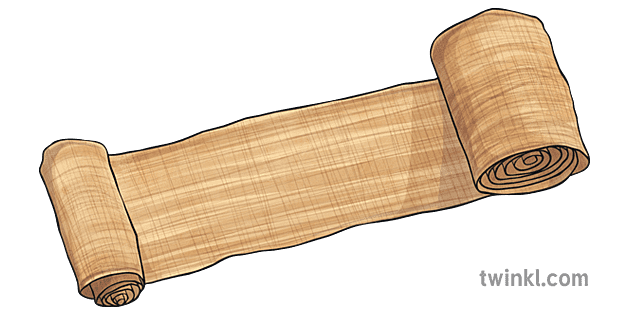
Until the time of the New Kingdom, the Egyptians all wore the same basic style of clothes. This involved long dresses with shoulder straps for women. Men would have worn kilt-like skirts, but other items of clothing would also be worn during the colder months. We know this from Tutankhamen’s tomb, where they found more items of clothing that we expected.
Often, these plain fabrics would have pleats or knots folded into it to provide decoration, especially if the person wearing them could not afford more expensive beads and jewellery. Standing out from the crowd was very important!
Let’s look at clothing from a practical point of view. What did ancient Egyptians use to protect their feet while they were hard at work?
Well, the answer is that ancient Egyptians often went barefoot. Footwear was a luxury item, and if they did have access to shoes, they would be sandals made from papyrus, grass, or other reeds. These reeds grew along the banks of the River Nile.
The wealthiest in society had more luck. Courtiers, kings, and queens might have had padded leather shoes made of ox leather.
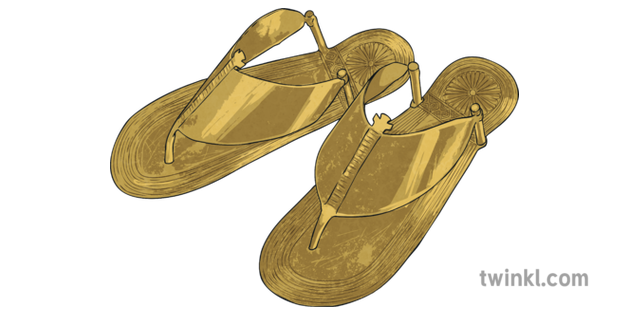 Jewellery
JewelleryWe mentioned previously that the Ancient Egyptians loved decorating their outfits. Both men and women wore necklaces, bracelets, and earrings.
It should come as no surprise that jewellers and goldsmiths had a prestigious role in their society. The jobs were highly skilled and highly paid.
Mines in the desert allowed people access to a great amount of gold ore, which could then be beaten into shape or cast into moulds. Goldsmiths at this time used a method called granulation to make patterns in their jewellery. This amounted to soldering tiny granules of gold onto an object as decoration.
In addition to the gold, the ancient Egyptians also had access to many precious stones through mining or trade. These included carnelian, feldspar, amethyst, turquoise, and lapis lazuli. Could you imagine how many beautiful colours you would see out in town?

Personal appearances were important in Ancient Egypt. That much is obvious. However, did you know that they often wore make-up?
Both men and women would use eye make-up called kohl, painting thick, striking lines around their eyes. It’s a black powder made from galena, which is the source of lead. This ore was found near the Nile and on the banks of the Red Sea.
The rich and poor wore kohl. It came in sticks for those who did not have much money, and the wealthy kept them in boxes. They would mix the powder with animal fats to make it easier to apply.
Kohl had various purposes, one of which was to honour the gods. It also helped to provide protection from the glare of the sun, which could damage their eyes. Many pharaohs sent expeditions out to bring back this resource, as it was so important to their culture.
Don’t forget that kohl came back into popularity in the 1920s, thousands of years after the ancient Egyptians used it.
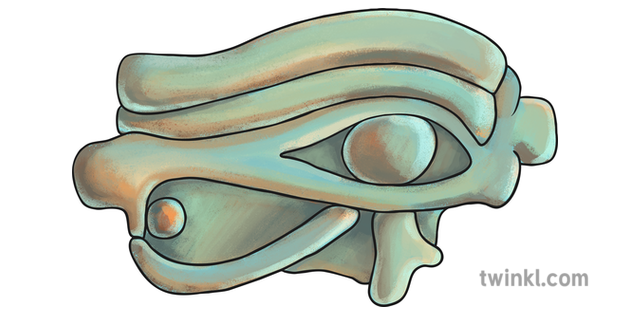
Men in Ancient Egypt often shaved their heads. This included common people as well as nobles. Even kings did this. One of the main differences between the rich and the poor was that those with money could afford to buy expensive wigs.
On the other hand, women wore a variety of hairstyles over the thousands of years of Ancient Egyptian civilisation. At times, short hair was in fashion. Later, curly and plaited hair would be preferred. Wealthy women also used wigs to live up to the standard of long, flowing, beautiful hair.
These hairstyles often involved elaborate jewellery tied into the hair. Other than beads and gold strands, you might have also seen someone wearing flowers, ribbons, or amulets as decoration.
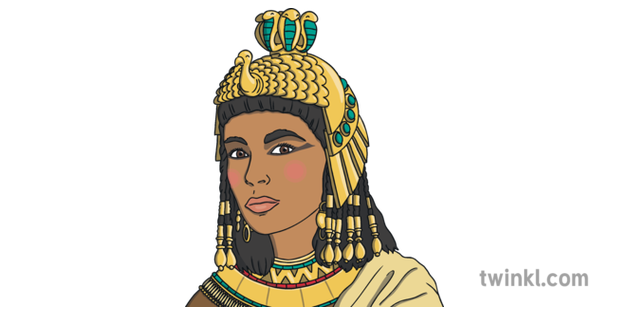
Most ancient Egyptian children didn't wear anything until they were about six years old. They went naked! There wasn’t a need for many clothes because of the hot, dry climate. As the children grew older, they would begin to wear simple clothes like their parents.
Girls usually wore their hair in pigtails. Boys mostly had shaved heads, except sometimes they left a pleated lock on one side called “the side-lock of youth”. They’d keep their hair this way until they were about 12 years old – an adult in ancient Egyptian culture.
No one was allowed to see a Pharaoh’s hair, so they always wore a crown or headdress. You can see these often in depictions of pharaohs in popular culture.
Their families would have had their own tailored outfits in the same style as other Egyptian fashions. The only difference would be in the quality of the materials. They might also have had dyes imported from other areas of the world.
Beauty proved very important for the wealthy. Nobles who could afford such luxuries bathed every day, using scented oils and perfumes on their skin and hair.
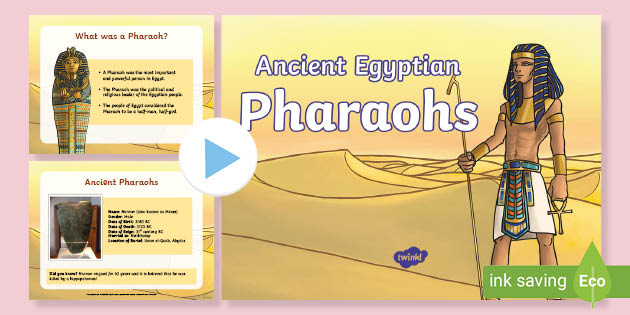
Learning about ancient Egyptian clothing is a wonderful way to tie in big historical events and eras with daily life. History is not all about famous figures, and instead includes how people lived and why they adopted certain traditions.
Answering those interesting questions like ‘What did Ancient Egyptian children wear?’ and ‘What were the clothes made of?’ can help children visualise what this time period would have been like to live in.
We’re here to support you as you plan your lessons on different topics, and Ancient Egypt is no different. If you want to learn more about ancient Egyptian clothing, we have this wonderful Ancient Egyptian Fashion Teaching Pack, containing both a beautifully-illustrated PowerPoint and several great activities that your learners can sink their teeth into.
You might also be interested in some of our other worksheets, games, and presentations about life in Ancient Egypt. If this sounds like something suitable for your teaching style, be sure to check out some of these resources:
For a catchy tune to show your learners as they start any topic on the ancient Egyptians, be sure to check out this absolutely brilliant song!